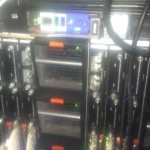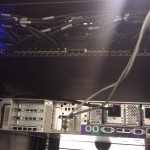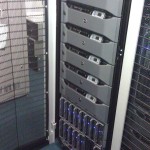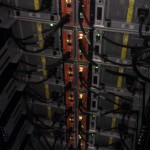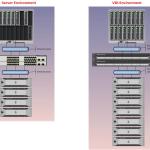My good friend Nathan Bryne wrote a good post about “Do I really need to do a Desktop Assessment?“, which got me thinking.
I worked at a college for around 3 years where we had a 1000 seat VMware View VDI deployment. I started working there just after the college had decided to go all-in on VDI and purchased the equipment, as most of their student machines were getting to 5 years old, and in some areas 7 years old.
The highlights of this were;
- DellM1000e Chassis
- 15 x M610 Blades with 96GB RAM Each
- 10GB Mezz Cards for Storage Networking
- 10GB Mezz Cards for LAN Networking
- 7 xDellEquallogicPS6100 SAN
- Fully populated with SSDs
- 1 xDellEquallogicPS6100XVS
- 12 x SSDs
- Rest are normal HDDs
- Dell 6224F Switch for 10GB Storage Networking
- Cisco 4500 Series Chassis for Connectivity to the LAN
- Thin Clients were iGEL UD3 and UD5
- Started on VMware View 4.5 ontop ofVMwareESXi 4.1
- Upgraded to View 4.6
- Then View 5.0 ontop of VMware ESXi 5.0
The first mistakes
I believe before I started at the college, they only conducted a small test of VDI Thin Clients in the LRC area of the college (where students just used to use a machine for internet access), this meant they did not capture all the users requirements for the areas in which they were going to be used, for example, in ICT Learning Department, where they use Dreamviewer and Photoshop!!!
They bought all the Thin Clients at once, yes they bought 1000 Thin Clients in one big go. As this was around 2010, this meant they were the first generation of PCoIP supporting Thin Clients.
It took us 2 years to deploy the thin clients around the campus. By that time, the advances in Thin Client technology had jumped forward so far.
The last first mistake was we moved to View 4.6 as soon as it come out. So picture this, the college had deployed around 400 Thin Clients to student areas. The golden image had not been perfected, and users were still getting use to the change. We had various issues with performance of the VDIs, and the occasional drop of connection, but then we were the first college, and one of the first major establishments (according to senior support at VMware) to move to View 4.6. And let me tell you, it all went to pot after that.
Getting the right people to install your project
So after year 2 of the VDI installation, we’d deployed the thin clients, had multiple pools for different learning centers, and found we ticked over on an OK basis, the performance of the VM’s wasnt bad, and we had weeded out most of the issues.
However, on our second campus, we kept having random disconnects, that happened using both PCoIP and RDP protocols, this varied from happening at logon to straight through to using the machine for a while and then, black screen. On our main campus where we were located, it did not occur as much.
So in the summer time, we contracted the upgrade to VMware View 5.0 out, and I met whom I consider to be an industry expert in EUC, but also now a great friend.
Together we stripped everything down back to basics, I mean trashed it all, every ESXi host, every VM template, everything, back to unplugging all the cables in the chassis and starting again.
What we found was that the Dell Chassis Switch which uplinked to our LAN was support to be configured in an 8 port etherchannel (four ports across both Mezz B1 and B2), to give us redundancy and capacity, what we found was that the configuration had been wrong, and spanning tree blocked all but one port.
Meaning for 2 years, our VDI environment had probably been running on a 1GB port, making the issues we had, not that bad if you ask me.
So me, and the expert, configured it all, built it onto the then latest and greatest, and it all ran perfectly. Why did I miss such a glaring mistake? Because the company who put it in, left no documentation, didn’t really demonstrate the management of the systems to anyone. So I was still learning the systems from scratch.
What I couldn’t change, perception and expectations
Unfortunately most of my efforts went unnoticed, as always does in IT, by the students, staff and senior management.
If you ever want to work in politics, work in a place of education first. It gives you a good background in which to work from.
So the thing I couldn’t change, was people’s perception and expectations. Everyone had this preconceived notion that these Thin Clients were basically still a desktop and could do everything a desktop could do or more. Why? Because before I started the college, that’s how it was sold to the Senior Management Team who agreed to spend Million plus pounds on the environment.
This made an uphill battle even more slippy, because we had teaching departments, asking for new and improved software to enhance their lessons, and rightly so, I don’t blame them. So then, in a rock and a hard place, I expands the offerings of the VDI deployment beyond what it was created for at its inception.
At inception, it was supposed to be for Light to Medium usage;
- Internet access
- Research
- Creation of Word, Powerpoint and Excel Documents
When I left, it was been used for;
- Full Adobe suite
- AutoDesk AutoCAD
- Electronic PCB Creation Software
- Application Development – Andriod and iOS
- Internet access
- Office Suite
- Online Exam software!!!!
And this is all on Thin Clients which are now getting to 4 years old when I left.
What I would do differently
So what have I learned;
- If a contractor or IT Solutions Provider install the system, ensure you get excellent documentation and training on the system.
- Capture the users needs and requirements
- Perform a desktop usage assessment
- Set the user expectations for the new system
- Create a scalable solution, which leads to the below;
- Create a Project Plan
- Focus on your roll-out strategy
- purchase against this strategy, don’t buy everything at once if you’re not going to deploy the hardware in a short/medium time frame.
- Plan for review time, optimization of the system etc
- Test your upgrades.
All of the above are common sense really, but when you bring these against the inner workings of a college or a business, they are usually the first things that get left behind, replaced with sentences such as;
- We need it now
- I need something that works
- I don’t care if it’s not meant to be for that, your stopping me from working, get it sorted
When you have multiple people all taking the same line, sometimes as an IT member, you have to bow to the pressure.
I have to admit, I did, I tried to make my opinions heard, but the machine won the battle, but lost the war.
They had a VDI system they asked for, but not a VDI system that worked.
On a lighter note, I’ve since deployed and worked on systems, where the correct steps were taken from inception to implementation, and they work fantastically, making VMware Horizon View one of my most favourite technologies and one of which I’m the most interested in. Also had this employer gone down the Citrix route, I’d have been a Citrix Cowboy, instead of a VMware Virtualboy.
Regards
Dean Lewis
P.s yes my Visio diagrams were that bad years ago!

